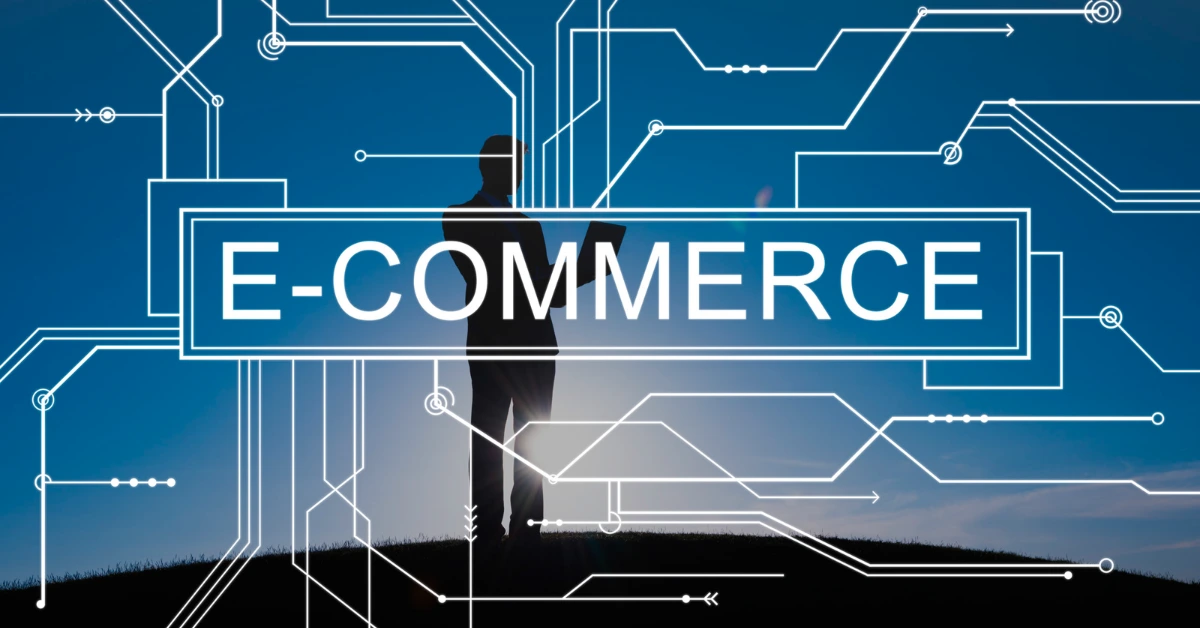Understanding how your web pages perform in search starts with SEO metrics: clicks, impressions, and average position. In Google Search Console these show how often your pages appear and how often users click them. A click is counted each time someone clicks from Google’s results to your site, while an impression is logged whenever your page shows up in search results, even if no one clicks it. Average position measures where your page ranks on Google (1 is top result, 2 is next, etc.) averaged across all searches. For example, if a URL appears at positions 2, 4, and 6 for different queries, Search Console reports its average position as 2 (the highest placement). Together, these metrics indicate your visibility: more impressions mean more potential viewers, more clicks mean your snippet is enticing and relevant, and a lower average position (closer to #1) means better rankings. Experts advise focusing on boosting impressions and clicks rather than obsessing over small position changes. After all, you need people to see your listing before they can click it, but it’s the clicks (engaged visitors) that really matter to conversions.
- Clicks: The count of times users clicked your link in Google Search. A click signals interest and engagement. High clicks (especially with a high Click-Through Rate) usually mean your title and snippet match what searchers want.
- Impressions: How many times your page URL appeared in search results. Google counts an impression whenever your link is in view on a search results page. Note this includes “infinite scroll” results and rich results – as long as the link is loaded, it’s an impression. More impressions mean your content is visible for more queries. However, aim for meaningful impressions: it’s best when people who see your result actually want your content.
- Average Position: The average rank of your URL (or property) across searches. Position “1” is at the top of page 1, and so on. It’s a rough gauge of rank because Google treats compound elements carefully. For instance, all links in a single knowledge panel or carousel share the panel’s rank. In Search Console, average position is calculated per query and then averaged, so a page with ranks 2 and 3 for two queries gets 2.5. A word of caution: position can fluctuate due to searcher location, personalization, and SERP layout (e.g. rich snippets). Therefore, SEO advice often recommends focusing on improving impressions and clicks, not chasing minor jumps in average position.
Why these metrics matter:
Impressions reflect how widely Google shows your page, clicks reflect how appealing your result is, and position reflects how authoritative Google believes your page is for the query. For example, a top-ranked page (position 1) naturally gets more impressions than a page at #10. If that page’s title and snippet are compelling, it will earn a high click-through rate (CTR), meaning lots of visitors relative to impressions. Conversely, if your snippet is weak or not aligned with intent, you may see many impressions but few clicks – a sign to improve your meta title/description or content focus. Ultimately, these metrics guide your SEO: tracking them helps you spot pages with high visibility but low engagement (i.e. high impressions, low clicks) or pages with rising rank (position dropping) and adjust strategy accordingly.
What Is Helpful Content?
“Helpful content” is user-focused content that solves a searcher’s problem or answers their question thoroughly and accurately. Google emphasizes people-first content – content created for people, not just for search engines. In practice, helpful content tends to have these key traits:
- Solves user intent: It directly addresses the searcher’s need. Rather than vaguely covering a topic, it focuses on answering the query or solving the problem that brought the visitor to Google.
- Original and in-depth: It provides new information, insight, or analysis that goes beyond what competitors offer. Google looks for originality – for example, include firsthand experience or unique data rather than copying others.
- Expertise and authority: Written by someone knowledgeable (an expert or enthusiast), it demonstrates clear expertise on the topic. This can mean author credentials, detailed product knowledge, or well-researched facts.
- Trustworthy and reliable: It includes accurate information, proper sourcing, and avoids sensationalism or clickbait. A helpful page won’t exaggerate claims and should read as something you’d want to bookmark or share.
- Well-organized and readable: It uses clear headings, bullet points, and concise language. It’s written for humans (with flow and clarity) and formatted so readers can easily find key points (important for long answers or “how-to” guides).
- Comprehensive but focused: It covers the topic in reasonable depth – enough to satisfy the query – without adding fluff. Ideally a reader should feel they’ve learned enough to achieve their goal without having to search again.
Google’s official guidance is clear: the Helpful Content Update (launched in 2022) was designed to promote “original, helpful content written by people, for people” and to demote content that exists mainly to attract search traffic. In other words, Google’s algorithms now reward pages that truly satisfy user intent. This is part of a broader push where Google values E-E-A-T (Experience, Expertise, Authoritativeness, Trustworthiness). Sites with deep, expert content are favored, while shallow or purely SEO-driven pages can lose rank. In practical terms, helpful content makes a visitor feel they found what they needed and had a satisfying experience, not that they’ve been tricked or left wanting more.
How Helpful Content Boosts Clicks, Impressions & Rankings
Creating helpful content directly affects your SEO metrics. Here’s how these concepts connect:
- More Impressions: Helpful, comprehensive content often targets a topic broadly and naturally incorporates related terms and long-tail variations. As a result, Google recognizes it as relevant to a wider range of search queries. This means your page will appear in more searches, increasing impressions. For example, using semantically related keywords (LSI keywords) in your article helps Google match your page to different but related queries. Semantic SEO (optimizing for meaning and context) ensures your content is seen by more users even if they phrase their query differently. In short, covering a topic thoroughly and including synonyms or related phrases broadens your reach. (Neil Patel notes that semantic SEO “broadens the scope of your content, making it more likely to rank for a variety of related searches”.)
- Higher Clicks (CTR): Helpful content improves click-through rate. When people see your page in search results, a well-crafted title and meta description that match their query will entice them to click. If your content delivers on the promise in the snippet, users are more likely to stay engaged. For instance, suppose a page ranks for a popular keyword and has many impressions but a low click count. This often means the title is not compelling or not aligned with intent. By rewriting the title to clearly solve the user’s problem or highlighting your page’s unique answer, you can turn impressions into clicks. Also, Google may display rich results (like featured snippets) for truly helpful content. When your content fits a snippet format, it can earn a spot at the top of the page in an “answer box,” which dramatically increases clicks. In summary, user-centric content that matches the search intent typically gets a higher CTR, driving more traffic.
- Better Average Position: Over time, Google rewards pages that keep users satisfied. Helpful content often leads to higher user engagement: longer dwell time, lower bounce rates, and even social shares or backlinks. These engagement signals tell Google your page is high-quality. If visitors stay on your page instead of “pogo-sticking” back to search results, Google’s ranking is more likely to boost your page’s position. Conversely, pages that people immediately abandon can drop in rank. As a result, consistently providing value can lead your average position to improve. SEMrush notes that pages “that directly address user intent” and offer comprehensive answers are likely to rank higher. In practice, satisfying intent on a site-wide scale helps too: Google’s update penalizes sites with lots of unhelpful content and rewards those with mainly user-first content.
Overall, helpful content builds authority and trust. When users consistently find valuable answers on your site, they are more likely to return and refer others. In turn, Google takes notice: authority sites tend to rank better. By focusing on usefulness instead of keywords alone, you create a virtuous cycle: more visibility (impressions) leads to more engaged clicks, which leads to higher rankings, which leads to even more impressions and clicks.
Creating Helpful Content That Ranks
To translate these principles into action, follow a strategic content creation process:
- Know Your Audience and Intent: Start by defining your audience and their goals. Who are they, and what problems are they trying to solve? Identify the search intent behind your target keywords (informational, transactional, navigational, or local intent) and tailor your content accordingly. For example, if the intent is informational (“What is keyword research?”), your content should explain the concept clearly. If it’s transactional (“Buy running shoes online”), the page should streamline the purchasing process. Answering “Why did the user search this?” helps ensure your content matches expectations. Perform some queries yourself and analyze the SERPs: look at the type of content Google is ranking (FAQs, listicles, product pages, etc.) and aim to meet or exceed that format.
- Keyword Research with Semantics: Effective keyword research today goes beyond exact-match phrases. Use tools like Google Autocomplete, “People also ask” boxes, and related search queries to find semantic and question-based keywords. For every main keyword, gather related terms (synonyms, related concepts, tools, and questions). Neil Patel advises to include LSI/semantic keywords so Google understands your topic’s context. For instance, if your topic is “coffee brewing,” related keywords could be “espresso machines,” “pour-over methods,” or “coffee grinders”. Weave these naturally into your content. Also incorporate question keywords (who, what, how, why) that users might ask. Headings or FAQ sections that directly answer these questions can capture additional clicks via Google’s “People also ask” features. Altogether, semantic SEO ensures your page appears for a broader set of relevant queries.
- Produce High-Quality, In-Depth Content: Write content that thoroughly covers the topic. Break information into clear sections with descriptive H2/H3 headings. Use bullet lists and tables for clarity. Short paragraphs (2–4 sentences) and simple language improve readability. Include examples, visuals, or data to enrich the content. Google’s guidelines emphasize originality and expertise; so avoid shallow, generic text. Instead, provide unique insights or tips. For example, rather than just saying “optimize images,” explain step-by-step how (resize to <100KB, use descriptive filenames, add alt text). This level of detail boosts user trust and engages readers longer. Schema markup can also help Google understand your content type (e.g. HowTo schema for guides), potentially earning rich snippets. According to experts, “creating content for users, not search engines” and demonstrating clear expertise are core to the helpful content system.
- Write Actionable and Value-Driven Copy: Aim to deliver answers or solutions, not just theory. Whenever possible, make your content actionable. Include practical tips, checklists, or how-to steps that readers can apply. Visuals (charts, screenshots, infographics) can illustrate complex points. If your post targets “how to” queries, format the steps clearly and concisely. When you give readers something tangible, they stay longer on the page – a positive signal to Google. Remember, the goal is that after reading your page, a user shouldn’t need to search again for the same answer.
- Craft Compelling Titles and Snippets: Your SEO title (H1) and meta description should accurately summarize the content and match search intent. Use the main keyword naturally in the title. Write a snippet that promises the solution or benefit. A well-aligned title/snippet not only attracts clicks but also avoids misleading visitors. If you’ve done keyword research, include strong, relevant terms here. As Exploding Topics notes, if a page has “high impressions but low clicks,” the first fix is often rewriting the title and description to better fit the query.
- Format for Searchers and Scanners: Many readers skim content before reading. Use numbered steps, bullet points, bold text for emphasis, and images where helpful. These formatting elements serve two purposes: they make the content more digestible for humans, and they help search engines identify your key points. For example, using an <ul> list for tips can help Google generate a featured snippet list. Also ensure your page loads quickly and is mobile-friendly, as Google considers page experience in rankings.
- Monitor and Update Regularly: SEO is ongoing. After publishing, use Google Search Console to track clicks, impressions, CTR, and position for your page. Look for opportunities: if certain related queries have high impressions but below-average CTR, tweak your content or metadata to address them. Likewise, if your ranking drops after a helpful content update, review if any sections are outdated or off-topic. Refresh your post with new statistics, examples, or insights to keep it current. Google favors freshness for many topics.
- Leverage FAQ and Question Keywords: Especially useful are question-style headings. E.g., add sections like “What is a click in Google Search?” or “How do impressions differ from views?” Answer them clearly. These can capture “People also ask” queries. When you address common questions in your niche, you cover more ground for semantic search. Over time, Google might pull those direct answers into search features, boosting impressions.
- User Engagement Matters: Finally, encourage user engagement on the page (comments, shares). If readers bookmark your page, share it on social media, or link to it elsewhere, these organic signals reinforce the page’s authority. Great content often earns backlinks naturally, which further improves rankings. In essence, valuable content can become a link magnet others will cite or link to your page as a helpful resource, feeding back into improved SEO.
Measuring Success and Continuous Improvement
Once your helpful content is live, continuously measure its performance using analytics. Google Search Console’s Performance report is invaluable: it lets you compare clicks, impressions, CTR, and position across time periods. For instance, when a Google algorithm update rolls out, you can compare “before vs. after” to see if your page was affected (drops in clicks or position suggest an issue). But even day-to-day, look for trends. A slowly rising average position coupled with growing CTR indicates your content is resonating.
Keep an eye on click-through rate especially. CTR is simply clicks divided by impressions. A high CTR means your snippet is effective, while a low CTR (despite good rank) means users aren’t finding your result appealing. In that case, revisit your meta tags and the opening of your content. Also, check if a zero-click answer is showing (like in the embedded Figure). If Google is answering queries right on the results page (via featured snippets or knowledge panels), your clicks may dip despite helpful content. In those cases, you can still optimize by adding “See more” sections on your page or focusing on longer-tail queries that the snippet doesn’t fully cover.
In summary, a page built as helpful content tends to earn higher rankings and engagement. When a page truly serves users, Google notices – and the metrics show it: impressions climb, clicks grow, and position improves. Your strategy should always circle back to the user: the better you solve their query, the more Google will reward your page. By making keyword research and content creation a user-first process, you naturally incorporate related and NLP-friendly terms and cover question-based keywords, which keeps your content aligned with what people are actually searching for. This combination of thorough keyword research and helpful writing is how you rank higher: you become the best answer for the search.
Key Takeaways:
- Aim to solve real user problems with clear, authoritative content.
- Use keyword research to identify intent and related terms.
- Structure your page with headings, lists, and examples. Write for humans first – Google’s updates encourage this.
- Monitor your clicks and impressions, and refine based on real data.
- In doing so, your content will not only improve SEO metrics (clicks, impressions, position) but will genuinely help your audience – the ultimate goal of any SEO strategy.









Share